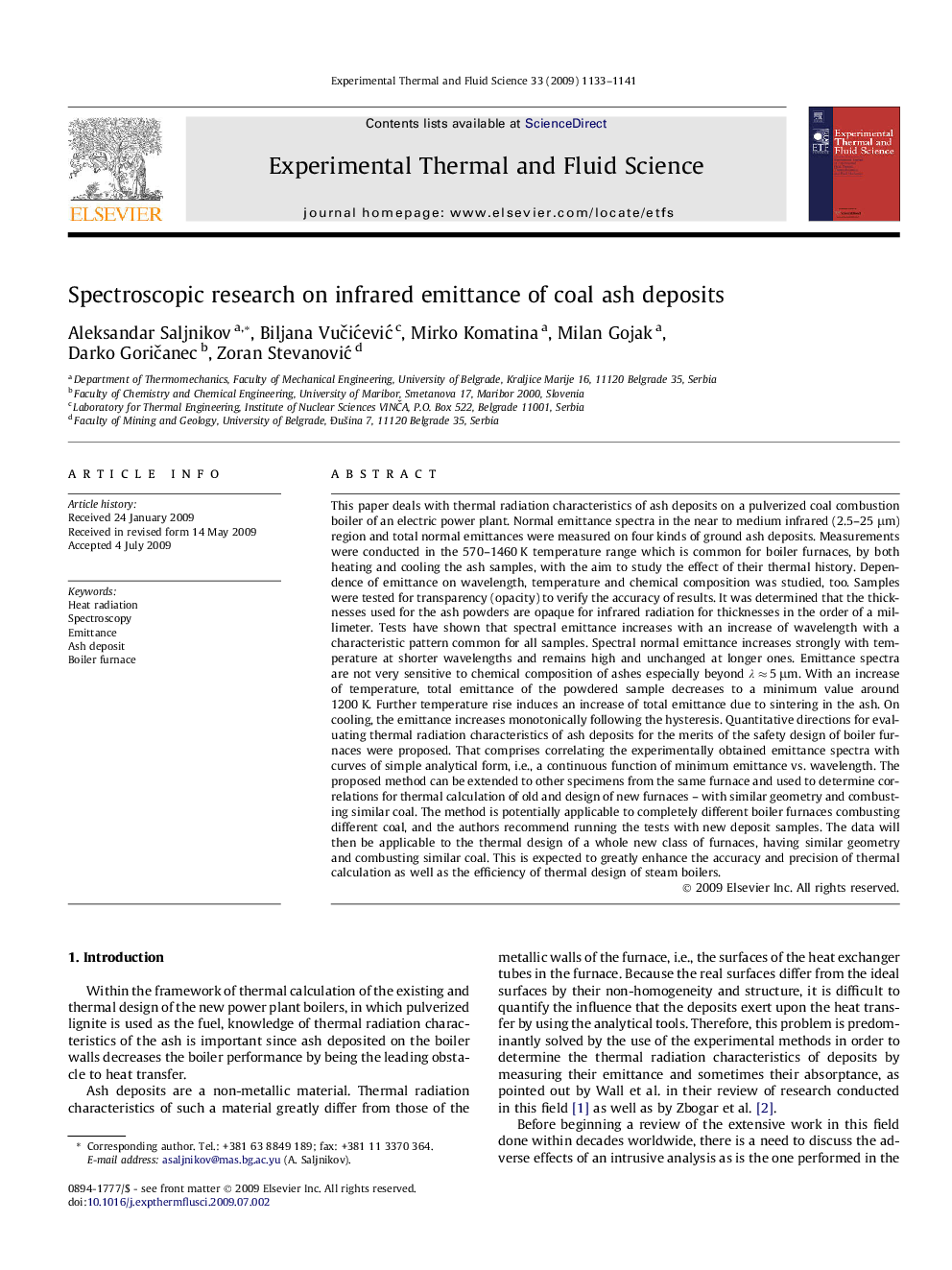| Article ID | Journal | Published Year | Pages | File Type |
|---|---|---|---|---|
| 652363 | Experimental Thermal and Fluid Science | 2009 | 9 Pages |
This paper deals with thermal radiation characteristics of ash deposits on a pulverized coal combustion boiler of an electric power plant. Normal emittance spectra in the near to medium infrared (2.5–25 μm) region and total normal emittances were measured on four kinds of ground ash deposits. Measurements were conducted in the 570–1460 K temperature range which is common for boiler furnaces, by both heating and cooling the ash samples, with the aim to study the effect of their thermal history. Dependence of emittance on wavelength, temperature and chemical composition was studied, too. Samples were tested for transparency (opacity) to verify the accuracy of results. It was determined that the thicknesses used for the ash powders are opaque for infrared radiation for thicknesses in the order of a millimeter. Tests have shown that spectral emittance increases with an increase of wavelength with a characteristic pattern common for all samples. Spectral normal emittance increases strongly with temperature at shorter wavelengths and remains high and unchanged at longer ones. Emittance spectra are not very sensitive to chemical composition of ashes especially beyond λ ≈ 5 μm. With an increase of temperature, total emittance of the powdered sample decreases to a minimum value around 1200 K. Further temperature rise induces an increase of total emittance due to sintering in the ash. On cooling, the emittance increases monotonically following the hysteresis. Quantitative directions for evaluating thermal radiation characteristics of ash deposits for the merits of the safety design of boiler furnaces were proposed. That comprises correlating the experimentally obtained emittance spectra with curves of simple analytical form, i.e., a continuous function of minimum emittance vs. wavelength. The proposed method can be extended to other specimens from the same furnace and used to determine correlations for thermal calculation of old and design of new furnaces – with similar geometry and combusting similar coal. The method is potentially applicable to completely different boiler furnaces combusting different coal, and the authors recommend running the tests with new deposit samples. The data will then be applicable to the thermal design of a whole new class of furnaces, having similar geometry and combusting similar coal. This is expected to greatly enhance the accuracy and precision of thermal calculation as well as the efficiency of thermal design of steam boilers.
